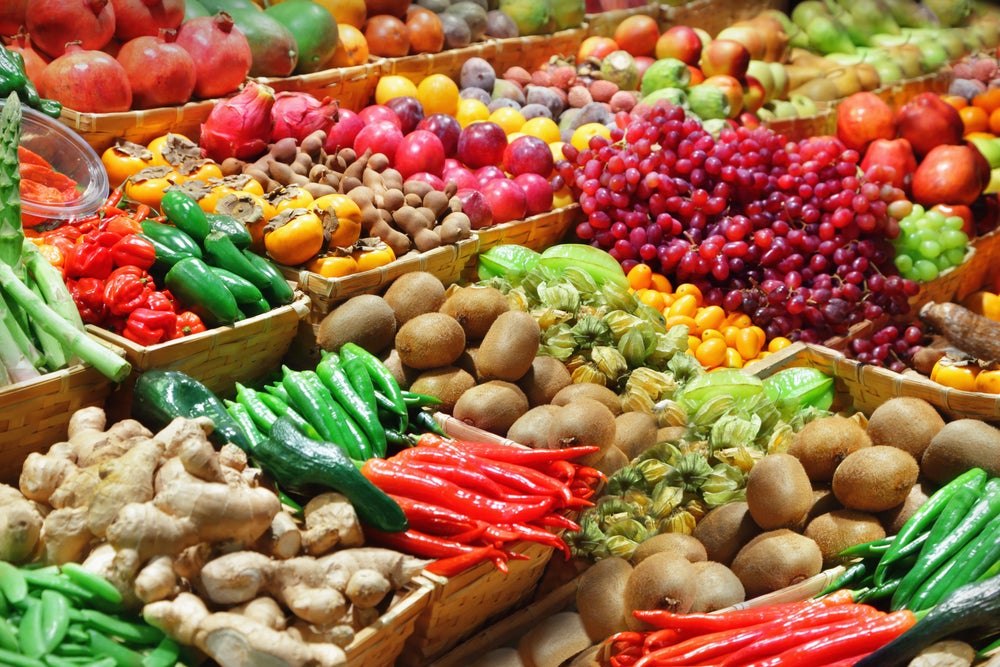Easy Ways To Eat More Veggies

Photo: <a href=http://shutterstock.com>Shutterstock.com</a>
Most of us don’t eat enough vegetables. A little creativity can correct the problem.
Vegetables are good for you. They are chock full of vitamins, minerals, and phytonutrients (nourishing plant chemicals, many of which function as antioxidants) that benefit our health in all kinds of ways. Among the many studies proving the benefits of high levels of vegetable consumption is a 2007 study by researchers at the University of Cambridge, who studied the diets of nearly 17,000 men and women between the ages of 40 and 79 and found that the more vegetables (and fruits) they ate, the healthier they were.
Besides being packed with vitamins, minerals, and phytonutrients, most vegetables also contain lots of fiber and water. Why is this important? Research has shown that we tend to eat a consistent volume of food each day, regardless of how many calories are contained in it. Water and fiber increase the volume of foods without increasing calories. Vegetables are said to be less “calorically dense” than other foods because their high water and fiber content makes them very filling compared to other foods of equal calories. For example, cooked zucchini contains just 16 calories per 100 grams, whereas cheddar cheese contains 100 calories per 100 grams. Therefore, by replacing any non-vegetable food in your diet (e.g., meats, grains, dairy products) with a vegetable you can cut calories without actually eating less.
The U.S. government recommends that adults consume two-and-half to three cups of vegetables (one cup of leafy salad counts as one-half cup of veggies). Seven out of 10 Americans fail to meet this requirement.
Sellers of antioxidant supplements, powdered vegetable extracts and the like will try to convince you that the reason so few of us eat enough vegetables is that eating vegetables is expensive and somehow time-consuming. These claims are ridiculous. We know very well that we don’t eat enough vegetables because we prefer the taste of hamburgers and, relatedly, because traditional breakfast and lunch food choices especially do not include vegetables.
RELATED: Eat Healthy At Home, Even With A Hectic Schedule
Getting more vegetables in your diet need not be expensive or time consuming—or yucky. All it requires is that you learn and practice simple, tasty ways to break out of common vegetable-avoidance habits. Here are some suggestions:
Load up your breakfast bagel. Like bagels for breakfast? Go ahead and eat them. But eat them sandwich-style with a slice of tomato, some lettuce, onions, sprouts, and/or sautéed eggplant between the two halves.
Eat veggie snack packs. Single-serving packets of celery, carrot, and other vegetable “sticks”, sometimes packaged with low-fat dips, have become popular and widely available lately. They make for convenient and satisfying between-meal snacks. Replacing your current snacks with veggie packs is a very easy way to add veggies to your daily diet.
Supersize your salads. Do you eat salads? Good for you. Now make them bigger. There’s no easier way to increase your vegetable intake. One-and-a-half cups of greens dressed up with some cherry tomatoes and shredded carrots counts as four servings of vegetables, and it’s really not that much to eat.
Add veggies to foods you already eat. You don’t have to follow any strict formula, but as a general guideline, try to increase the size of your vegetable portion within foods by 50-100 percent. For example:
- a stir-fry with more vegetables and less meat and/or rice
- a sandwich wrap (i.e. sandwich ingredients wrapped in a soft tortilla) instead of a regular sandwich with bread (not only do tortillas have fewer calories than sandwich bread, but it’s easier to stuff a wrap with more veggies)
- a burrito with less meat and rice, more beans, and grilled veggies added
- kabobs with less meat and more veggies
- pizza with a thinner crust, slightly less cheese, and more vegetable toppings (e.g. tomatoes and green peppers).
- soup with more veggies and less meat, noodles, and/or broth
When all else fails, drink vegetable juice. Despite what their makers claim, vegetable juices are not complete substitutes for whole vegetables. If they were, they would crunch between your teeth when you drank them! But they do provide most of the good stuff contained in vegetables and they are healthier than anything else you might drink. Plus, they are very convenient. So if the choice is between vegetable juice and no vegetable at all, by all means, drink the juice.
RELATED: Managing Your Weight Through Food Groups
Get the latest in triathlon training, gear, nutrition and news sent straight to your inbox. Sign up for Triathlete’s newsletter.